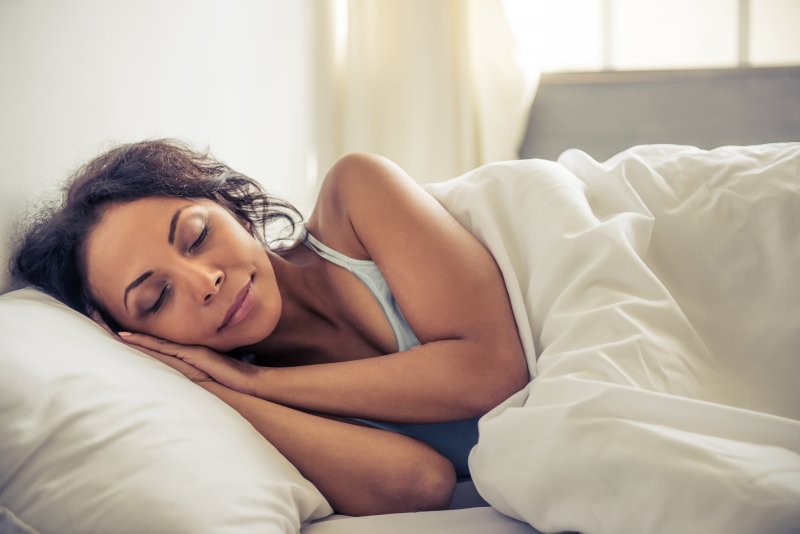The Best Sleeping Positions for Sleep Apnea Sufferers
November 12, 2020
Most people have a favorite sleeping position. Maybe you like to curl up on your side, or perhaps you like to relax on your back and spread out your limbs. You may even be most comfortable when you are lying on your stomach. While the way you arrange your body while you’re asleep might not seem like a big deal, it can actually have a big impact on your health. What you think of as your go-to sleep position may be working against you and affecting your body over time. In particular, it can affect how well you breathe at night which is a big deal for those suffering from sleep disorders. Let’s discuss how your nightly sleeping position may have a bearing on the severity of your sleep apnea.
Side Sleeping
Side sleeping with your back mostly straight is the best position for sleep apnea sufferers according to the Sleep Better Council. Research shows that sleeping on the left side reduces sleep apnea even more than sleeping on the right. It creates optimal blood flow and minimizes the chances of airway obstructions which can reduce the number of apneas that you experience each night. Side sleeping even comes with additional benefits. For example, it has been shown to decrease insomnia and relieve gastroesophageal reflux. It also helps to keep the spine in its proper alignment.
Also, keep in mind that having the right pillow is important; a thicker pillow to support your head and neck is ideal for side sleeping, or many choose the body pillow route as they are larger and help keep your body in the same position. And, as an added bonus, left-side sleeping is particularly good for pregnant women since it improves circulation to the growing baby.
If you’re a right-side sleeper, don’t fret! Right-side sleeping is number two for sleep apnea sufferers and also has benefits that include increasing good air and blood flow for your body.
Stomach Sleeping
Stomach sleeping is okay for sleep apnea sufferers because it puts gravity on your side. It pulls the tissues in your mouth and throat forward, thus reducing the chances that they will cause airway obstruction. Just be sure that you’re careful not to let your pillow partially block your nose or mouth, which can make it difficult for you to breathe properly. Also, it’s important to consider what type of pillow you are using. A very thin pillow or one specifically designed for stomach sleepers is ideal and may help alleviate strain on the neck when you are sleeping in a face-down position.
Back Sleeping
Back sleeping may be good for spinal alignment, and it can prevent you from waking up with pillowcase lines in your face. However, it is the worst sleeping position for individuals with sleep apnea. It allows gravity to pull the soft tissues in the throat downward, which increases the chances that they will collapse during sleep and lead to airway blockages. It can also make snoring much worse. To break the habit of sleeping on your back, you might try investing in a new pillow that provides adequate support for side sleeping. You may also find it helpful to tape an object to your back (such as a tennis ball) that will train you to sleep on your side.
Your sleeping position can have a big impact on your sleep apnea! A few simple adjustments, along with a sleep apnea consultation from a qualified professional, might be just what you need to breathe easier and get the quality sleep you need to thrive.
About the Author
Dr. Kenneth Mogell, a board-certified specialist in dental sleep medicine with over 10 years of experience treating sleep breathing disorders, is the founder and primary practitioner of Florida Dental Sleep Disorders. The practice has four South Florida locations: Boca Raton, Melbourne, Vero Beach, and Jupiter. To learn more about Florida Dental Sleep Disorders and Dr. Kenneth Mogell, contact our team at 844-294-7559.
